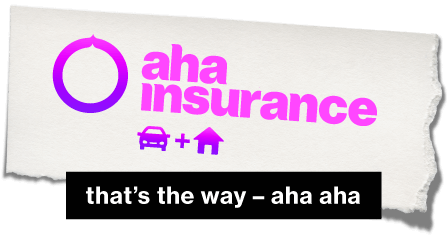Taking a drivers’ ed course and obtaining a driver’s license is a rite of passage for many young Ontarians, providing them with the freedom to run their own errands, go on dates and travel to sports events and concerts.
As the most populated Canadian province with some of the busiest roads in the country, car insurance in Ontario can be expensive for new drivers. Quality driver’s ed programs can help less experienced drivers and their families save significantly on insurance.
Ontario’s graduated license system is designed to walk new drivers through essential stages in the learning how to drive process, ensuring that the basics are understood and practiced before allowing the student to tackle more difficult challenges.
It is not mandatory to successfully complete a drivers’ ed program in Ontario in order to become licensed. However, it can certainly help less experienced and young drivers better understand some of the concepts required to pass the Ministry of Transportation’s tests as well as help them become more confident driving a vehicle safely.
In addition to teaching new drivers how to safely drive a vehicle, beginner driver education programs can also reduce the cost of adding them to a parent’s insurance policy or purchasing their own coverage.
What is Drivers’ Ed?
Drivers’ education is a formalized series of lessons aimed at providing new drivers with a combination of classroom and practical on-road education.
While drivers’ ed programs are not mandatory in Ontario to become licensed, they can certainly help young and less experienced drivers better understand the concepts required to pass the Ministry of Transportation’s tests and become more confident while behind the wheel.

What do you learn in Drivers’ Ed?
Standard drivers training classroom instruction teaches young and new drivers the rules of the road, including lessons to understand concepts such as pedestrian right of way, the impacts of alcohol consumption on driving ability, how to read road signs and how speed affects braking response time.
The practical in-car training which usually includes 10 hours in a car, will allow the student to learn basics such as signalling a turn, coming to a full stop at a stop sign and safely changing lanes. Once the basics are mastered, students will move on to more complex concepts such as three-point turns, navigating a four-way stop intersection, freeway driving and the dreaded parallel parking.
How do you choose a driving school?
Ontario driving schools come in all sizes, from one-person shops to nationwide chains. So how do you choose a drivers’ ed school?
In Ontario, the Ministry of Transportation offers driving schools the ability to become a “government approved” facility. In order to qualify for this designation, schools need to provide their students with:
- At least 20 hours of classroom training.
- 10 hours of in-vehicle practical training with a driving instructor.
- Another 10 hours of “flexible training, which can include simulators, additional in-vehicle training or computer learning such as online courses.
There are also class size requirements and the need to register completion certificates with the Ministry once a student graduates.
Some schools specialize in students who are going through the licensing process as adults. While other programs offer classroom and in-vehicle training by instructors who speak specific languages. Still, others specialize in driving lessons for people new to Canada that focuses on the differences between the driving laws and habits from the area they were originally licensed in and Ontario.
While drivers may opt to take their education with a non-approved driving school, they will not benefit from the accelerated timeframe to take the G2 road test. It’s also possible that your insurer will not offer a discount to drivers who have a certificate of completion from a school that isn’t approved by the government.

Do you need your G1 license to attend driving school?
While there is no legal requirement to hold a G1 license to begin the classroom portion of the drivers’ ed curriculum, a student will need a beginner’s license to be an MTO-approved beginner driver before they can get behind the wheel for any of the in-vehicle training. Depending on the course schedule, the time period between classroom and in-car lessons might range from several weeks in the case of after-school classes to only a couple of days for intensive courses.
How much does a driver education school cost?
Just as Ontario driving schools come in all different sizes, there is also a large discrepancy in their prices. In 2022, the cost of Ontario driving school’s beginner packages ranged from $600 to $2,000. MTO-approved beginner driver education courses tend to be more expensive than non-approved schools, as there are certain requirements and reporting guidelines they must follow.
It should be noted that there is a direct correlation between price and the hours of practical in-vehicle training. The more time a student spends in the car, the more expensive the program.
While the standard beginner course will be adequate for most new drivers, not everyone will learn at the same pace. Some drivers may need to purchase additional hours of training to master the skills required to drive safely and responsibly.
Can driver’s education help me get my G license?
Most beginner drivers’ education courses are designed to help new drivers graduate from their G1 license to their G2 license. There are also courses tailored to helping more advanced students gain skills required to graduate to a full G class license.
These courses tend to focus more on practical on-road classes and help ensure mastery of the skills required of a fully licensed driver.
How much can I save on insurance if I take drivers’ ed?
Depending on the insurance company: A new driver who successfully completes an approved drivers’ education course can expect to save anywhere from 20% to 30% on their insurance, which is roughly the equivalent of having 3 years of driving experience and license history versus 1 year.
Given the high cost of insuring a new driver, these discounts can offset driver’s ed costs in a few years.
Drivers’ education can help new drivers learn the skills and knowledge required to drive a vehicle safely and responsibly in Ontario while also helping them navigate the provincial graduated license process. Graduates will often have a better understanding of the rules of the road and get behind the wheel with more confidence.







